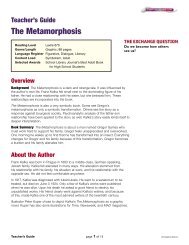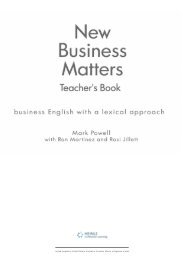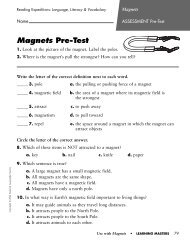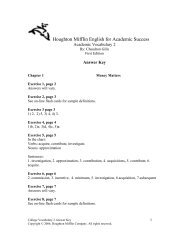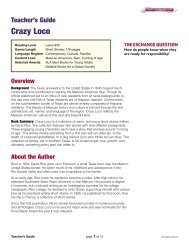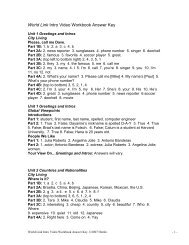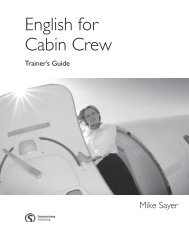Top 20, Great Grammar for Great Writing, First Edition Teaching Notes
Top 20, Great Grammar for Great Writing, First Edition Teaching Notes
Top 20, Great Grammar for Great Writing, First Edition Teaching Notes
You also want an ePaper? Increase the reach of your titles
YUMPU automatically turns print PDFs into web optimized ePapers that Google loves.
<strong>Top</strong> <strong>20</strong>, <strong>Great</strong> <strong>Grammar</strong> <strong>for</strong> <strong>Great</strong> <strong>Writing</strong>, <strong>First</strong> <strong>Edition</strong><strong>Teaching</strong> <strong>Notes</strong>http://esl.college.hmco.com/instructorsCopyright Houghton Mifflin CompanyChapter 15 – Parallel StructureOverviewThis chapter focuses on balancing grammatical structures to improve writing through theuse of parallelism. The chapter addresses parallelism between the following elements:words, phrases, clauses, and sentences. Connecting those elements with bothcoordinating conjunctions and correlative conjunctions is addressed in each section of thechapter. In addition, the chapter addresses using parallelism when making comparisonsand using repetition to emphasize parallel structure.<strong>Teaching</strong> <strong>Notes</strong>Parallel Words (15.1)Introduce students to the idea of parallelism by presenting them with a list of nouns,verbs, adjectives, adverbs, gerunds, etc. and asking them to group similar words (nounswith nouns, verbs with verbs, etc.). Next, list coordinating and correlative conjunctionson the board and have students take turns choosing two words from a group and one ofthe conjunctions to <strong>for</strong>m a sentence containing a parallel element.Review section 15.1 in the text and follow with Exercise 1.Parallel Phrases (15.2)Elicit examples of different types of phrases from students (prepositional, infinitive,gerund). Ask them to join two like phrases with a conjunction. Review the in<strong>for</strong>mationin section 15.2 and follow with Exercise 2. As a follow-up activity, ask students tosearch <strong>for</strong> parallel phrases in news and magazine articles, textbooks, etc. and bring themto class to share.Parallel Clauses (15.3)Review the definition of a clause and elicit or offer examples of the following types:noun, adjective, and adverb. After reviewing section 15.3, ask students to offer examplesof their own. Have students work alone to complete Exercise 3; have them compare theiranswers with a classmate’s or correct the exercise as a group.Parallel Sentences (15.4)Review simple, compound, and complex sentences. Present students with examplesentences and ask them to connect them using coordinating and/or correlativeconjunctions. After reviewing section 15.4, have students complete Exercise 4 on theirown. Ask students to share their answers with the class.



